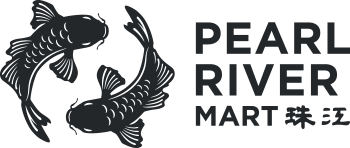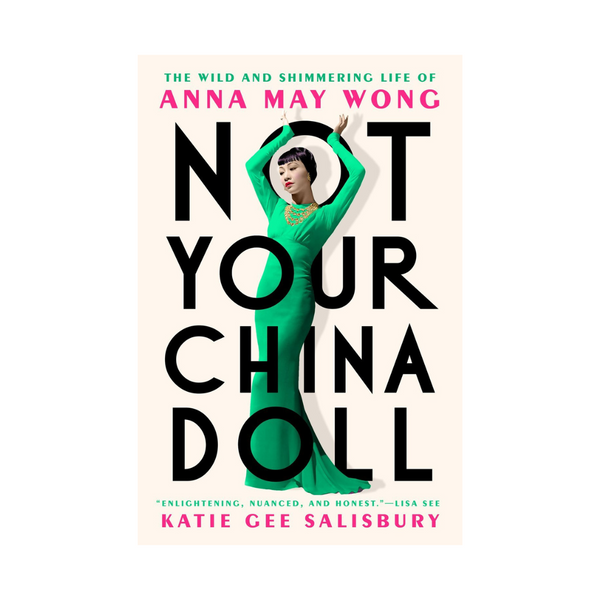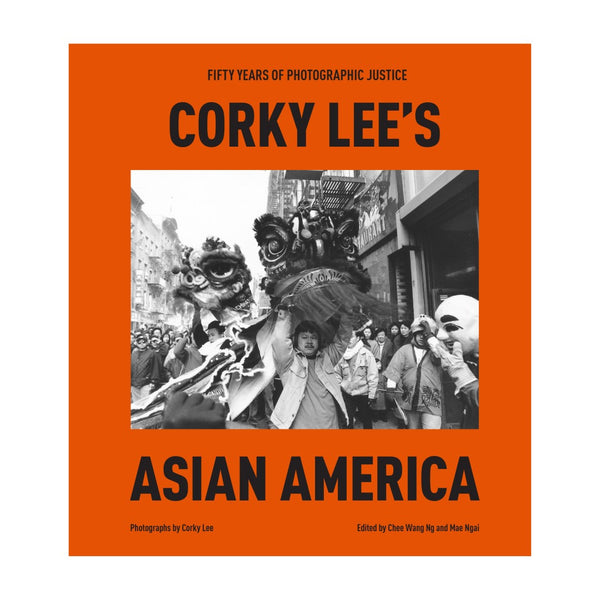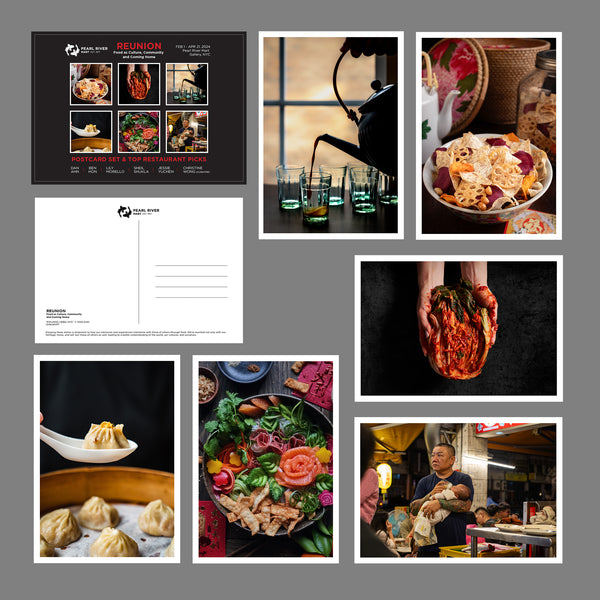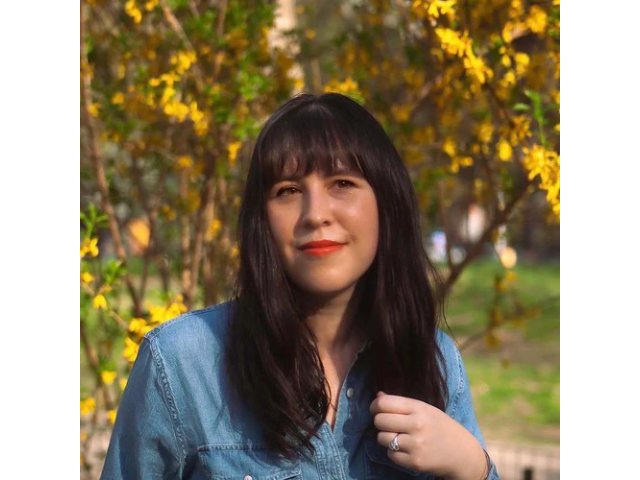
Artist-in-Residence Katie Gee Salisbury: Bringing to Light the Legacy of Anna May Wong
It's only been in recent years that Anna May Wong has started to get the recognition she has long deserved. With a quarter from the U.S. mint and a Barbie doll in her likeness, the iconic movie star and her legacy have finally begun to reach mainstream consciousness.
“The importance of Anna May Wong’s life and career as a figure in early Hollywood cannot be overstated,” writes Katie Gee Salisbury, author of the new Anna May Wong biography, Not Your China Doll, and curator of upcoming exhibitions in our Soho gallery and Chelsea Market. “She introduced the American public to a compelling vision of Chinese American and Asian American identity at a time when our visibility was either limited or vilified. She was also, significantly, the first woman of color to become a movie star in the Hollywood system.”
We had the chance to talk to Katie about her book came to be, some fun facts about Anna May Wong, and the craziest thing she bought at Pearl River.
Tell me a little about your childhood and background. Where did you grow up?
I grew up in Arcadia, which is a suburb of Los Angeles in the San Gabriel Valley. I'm part Chinese and part Anglo-Irish and fifth-generation Chinese American on my mom’s side. Arcadia went through a transformation during my childhood so by the time I was in high school, the student population was about 50% Asian. I grew up in a very Asian American community.
I also grew up knowing my grandfather was an important person in Chinatown. My mom lived in L.A. Chinatown until she was five. Her father was the president of the Chinese Benevolent Association and a business leader. He became successful by first running a general store, then a restaurant. Chinatown had to move several times as the city developed, and my grandfather was part of a group of business leaders who helped build a new Chinatown in the 1940s and '50s.
You're both a photographer and a writer. Did those two interests develop hand in hand, or did one arise from the other?
I've always wanted to tell stories. From the time I was a little kid, I was a big reader, escaping into stories and books as well as movies and TV. I'm also a visually driven person. In college I started to become interested in different types of publishing. I had an internship at People magazine and a Shanghai newspaper.
The internships were fun, but the world of daily and weekly newspapers and magazines was too fast-paced for me. Book publishing was a better fit. You can put more time and effort into books. Eventually I moved to New York to work in book publishing. I worked on lots of nonfiction books, which helped me figure out how I wanted to write about Anna May Wong.
How did your parents feel about your getting into writing and publishing?
They weren't super enthusiastic about my moving to New York, which I did without a job in August of 2008. My best friend from college generously said I could live with her until I found a job. My parents didn't want me to be so far away. Why book publishing? they asked. Why is it only in New York? In the back of their heads, I think they secretly wished I would stay close by in Southern California and go to law school, i.e. choose a profession that was familiar and more secure. Luckily, I got a job at HarperCollins Publishers within a month of moving to NYC.
Then, after about 7 years of working in-house, I went freelance as an editor. My parents didn't understand that at first either. What is it with your generation? I remember my dad saying. You’re always changing jobs. I’ve been in the same job for 30 years… But they've come around to my chosen path in life. The main thing is they wanted me to be able to support myself, and because I’m able to do that, they see that it's okay.
Of course, they're very excited about Not Your China Doll, my book on Anna May Wong. Very supportive. My dad has read it multiple times, and their friends have come out in droves to support me. I think it's hard for any parents when their children choose to take the creative route. It can be risky.
Have you been wanting to write this book for a long time?
Yes, it's lived in my head for the past 20 years. My first college internship was at the Chinese American Museum in Los Angeles, which is where I saw a photo of Anna May Wong for the first time. The curator told me about her, and I was flabbergasted that someone like her even existed and that no one had told me about her. Everyone I asked didn't know anything about her. I was fascinated by her and also thought it an injustice that someone like that could be forgotten.
I started doing research in college. I wanted to write about her for my senior thesis but that didn't work out. Then I learned first hand how people write books while working in publishing. One of the books I worked on during that time was Fifth Avenue, 5 A.M. by Sam Wasson, which was about the making of Breakfast at Tiffany's. Working on that helped me figure out how to write about Anna May Wong. The last five years have been dedicated to seriously researching and writing her story.
We at Pearl River love fun facts. What are three interesting facts about Anna May Wong that you think everyone should know?
One is that she was a fashion icon. She was named by the Mayfair Mannequin Society of New York as the best dressed woman in the world. She had a distinct sense of style and knew what she looked good in. She wanted an Asian element in all her outfits; sometimes it was the fabric or chrysanthemum in her hair. For example, she often had her Chinese name, 黄柳霜 (Wong Liu Tsong) embroidered on her clothing, bags, or hats. Her fingernails were always manicured to be long and pointed. She had these little touches. When she traveled to China, she fell in love with the modern cheongsam and had quite a number of them made for her there. In the late 1930s and early 40s, she could be seen almost exclusively wearing cheongsams, which looked fantastic on her willowy figure.
Another thing, and something that people often forget, is that not only was she American, she was third-generation. Her parents were born in America. It was her grandparents who came from China during the gold rush. That's so emblematic: Chinese Americans have been in this country for hundreds of years and yet that fact is not often recognized.
Something else I think people should know is that she was very cosmopolitan. Anna May traveled the world and spoke many languages. She went to Europe to make films, and learned German and French there. In England they hated her "terrible" American accent and so she took elocution lessons to speak with a British accent.
She also spoke Toisanese, although most people outside her family couldn't understand her. And she learned Mandarin during her 10 months in China. She didn't make movies there, but the trip fulfilled a longtime personal wish of hers.
It seems she successfully made the transition from silents to talkies, and not everyone did.
That's right. She was able to seamlessly make that transition. She also did radio, live theater, and TV. She even had her own TV show in the 1950s called The Gallery of Madame Liu-Tsong. In it, she played an international art dealer who goes around the world solving art crimes.
That sounds so good!
It really does! I’d love to watch it. But it's unfortunately considered lost. The tapes were supposedly dumped in the East River when DuMont Television went bankrupt, but all of us fans are hoping that one day an alternate copy will resurface.
Tell me about your exhibition at Pearl River.
The idea of the show is to give people a primer on Anna May Wong's life and career, the important achievements she made, and why she's still relevant today. It's also a celebration of how glamorous, beautiful, and composed she was, and a way to introduce people to her filmography. A lot of people who know about Anna May Wong haven't actually watched her films. I feel like you won't fully get her until you see her on screen. Her magnetism and charm—you just have to see the moving pictures themselves. In the end, I hope the show inspires people to explore more about Anna May Wong.
You also have installations in Chelsea Market and the Meatpacking district. Can you tell me about those?
In Chelsea Market, I’ve curated a selection of artwork that honors Anna May Wong from six artists: Felicia Liang, Elizabeth Yoo, Mina Chacko, Tiffany Liang, Helen Chang, and Linda Sandoval. Their work spans several mediums, including oil painting, digital art, and collage.
Often, when we think of Anna May Wong, we assume she was the only Asian working in Hollywood at that time. However, through my research, I learned that there were quite a number of Asians and Asian Americans working in the industry then. To highlight some of these pioneers, we’ve selected nine figures to be featured on the tables in the pedestrian areas around the Meatpacking district. The group includes Sessue Hayakawa, James Wong Howe, Etta Lee, Elena Jurado, Edward L. Park, Winnifred Eaton, Moon Kwan, Philip Ahn, and, of course, Anna May Wong.
What makes Pearl River a good fit for your show? Do you have a favorite memory of the store?
When I first moved to New York, I lived in Chinatown. I bought lots of stuff from the store. At the time, it was in the big space on Broadway with three floors. I spent a lot of time in the basement buying homegoods. Bowls, kitchen timers, stuff like that. There were a lot of random but fun things down there. One of my favorites was a piggy bank that was a rabbit covered in astroturf. [Laughs] It was so weird and funny. I gave it away eventually, but I had it for many years.
What I love about Pearl River is that it's a hub for other Asian Americans, and yet at the same, an entry point for people who might not be familiar with the culture but are curious to learn more. It's accessible and brings together a lot of different kinds of people. It seemed like the perfect place to talk about Anna May Wong.
"Not Your China Doll" is on view in our Soho gallery from through Sept. 8, 2024. The book which inspired the exhibition is available on our website and our Soho and Chelsea Market stores.
[Photo credit: Jmar Teran]
